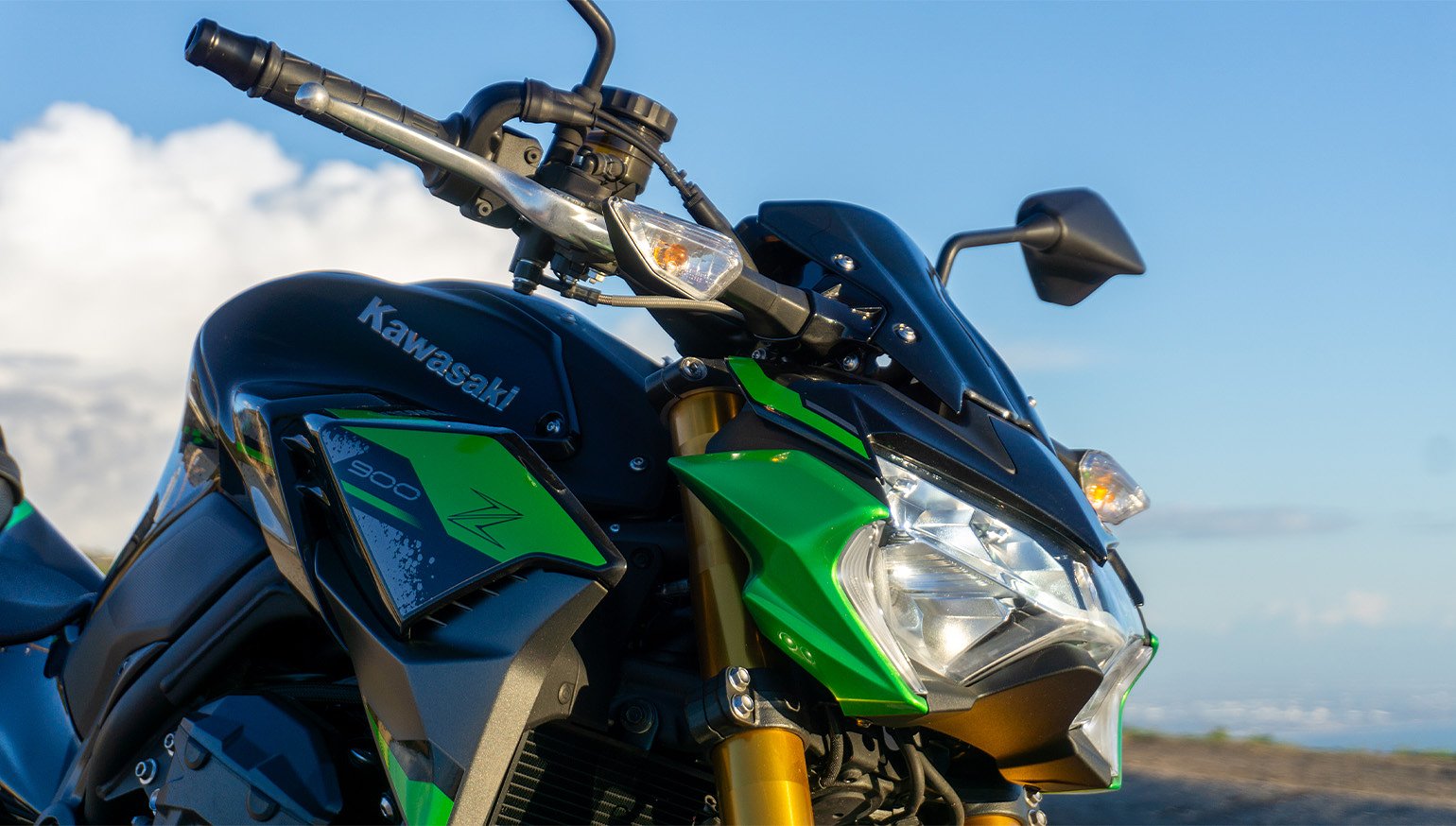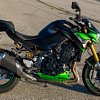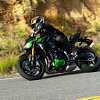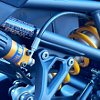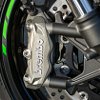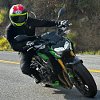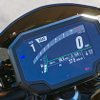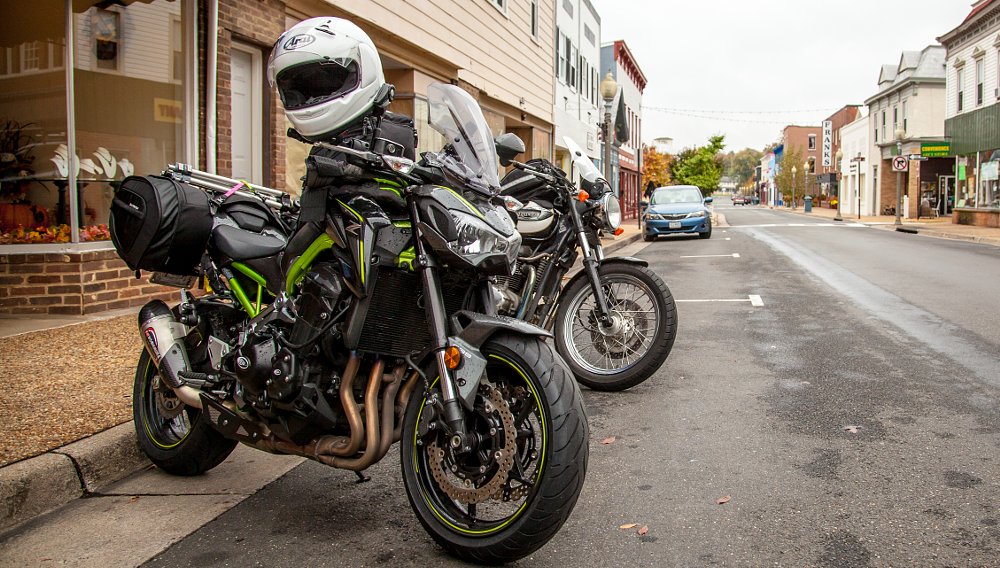As a kid, I used to spring out of bed every Saturday morning. I’d dash to the kitchen, pour myself a bowl of Cap'n Crunch, and watch cartoons for hours on end. Intermissions often included LEGO building, Lightsaber duels, or Matchbox drag races. It was action-packed. It was sugar-fueled. It was fun — plain and simple.
My Saturday mornings look a bit different nowadays. I don’t jump out of bed, I gingerly roll out. Cap'n Crunch stays on the shelf. In its place is a cup of herbal tea. Saturday morning cartoons are gone, too. Instead, NPR plays in the background. These days, my mornings are recuperative and meditative. In a word, sensible.
Why am I bringing this up, you ask? Because riding a motorcycle can resemble either experience. The Kawasaki Z900 SE's face has a whiff of cartoons and Legos about it, but the spec sheet suggests calm competence. So which morning ritual does the Z900 SE resemble?

A second opinion
If you haven’t viewed Zack’s Daily Rider covering the Z900 SE, do yourself a favor and give it a gander. That endorsement doesn’t just go for the episode’s educational and entertainment value. It also goes for the video’s relation to this review.
In the interest of limiting redundancies, I’ll come right out and say it: I largely agree with Zack’s assessment. Kawi’s inline-four is the definition of good, not great. When describing it, I can’t use superlatives like “gem” or “peach.” I can’t fault it in any major way, either. If anything, the gearing is admittedly short. I often asked myself, “Why am I in third gear on a residential street?” Still, the 948 cc engine performs well in nearly every situation, even if it doesn’t wow the rider.
The same goes for the brakes. I have no experience with the base Z900, so I’ll have to treat Zack’s positive account of its brakes as gospel. What I do know is that the SE comes to a halt in a hurry. That’s what braided lines and Brembo M4.32 Monoblocs do for most bikes. Likewise, they’re good, but not great. While that statement covers most aspects of the up-spec variant, some of its qualities and quirks are worth a deeper dive.
Get a grip
Kawasaki lists the 2023 Z900 SE’s wet weight at 470 pounds. That’s roughly 50 pounds more than the Yamaha MT-09 SP and nearly 70 pounds over a fully-fueled KTM 890 Duke R. Skeptics could argue that the model’s true rival is the 472-pound MT-10 SP, but they’d have to ignore the Z900 SE's 125-horsepower rating (claimed) and $10,899 MSRP ($11,400 in 2024) to do so. Both metrics place the Z squarely in the 900 cc naked class, so I’ll treat it as such. That puts the green machine on its back foot in the weight department, but the bike’s handling is not what its heft would have you expect.

Like a defensive end on third and long, the Z900 SE displays surprising speed and agility under the right circumstances. Push it around the garage and you might as well be behind a weighted sled. Get it rolling under its own power, and the SE is unexpectedly graceful. Tip-in is fluid and predictable. Mid-corner corrections are effortless and immediate. Does it tout the “scalpel-like” precision of the Duke? Nein. Is it the apex-diving, wheelie-happy MT-09? Not so much. But for a bike on the wrong side of 450 pounds, it dances below its weight class.
The only time that assured handling isn’t present is when the rubber meets a wet road. As Spurgeon previously discovered, the model’s Dunlop Sportmax Roadsport 2 tires yield adequate grip in dry conditions. Add moisture to the equation and edge grip is quickly compromised. On one damp morning, I rolled on the throttle while approaching a corner exit and the rear wheel immediately kicked out. The tire lit up and the chassis made more shapes than a wet noodle. For lack of a better word, yikes.

Fortunately, the Z’s traction control saved my bacon, but if you ride in wetter climates, I highly recommend swapping to more rain-ready rubber. I should note that the Roadsport 2s aren’t completely hydrophobic. During a winter rainstorm, the tires tackled urban streets without one slip. The grip issues only arise when introducing corner-hugging lean angles on damp pavement.
As long as conditions remain favorable, the SE’s up-spec hardware works in concert. Sometimes, a bike’s suspension is too soft for its brakes or its stopping power doesn’t match its horsepower. That’s not the case here. The Brembo binders and Öhlins shock are neither brand’s top-shelf offering, but they complement each other, especially at a fast clip.

The difference is, the Z900 never goads the rider into such behavior. Kawasaki’s inline-four engine delivers its share of excitement, but with a linear powerband and a modest mid-range surge, the Z defers to the user’s whims, not the other way around. That friendly nature extends to much of the model, including its ergonomics.
In the pocket
Naked bike seats often hover between the low-riding saddles of cruisers and the lofty perches of ADVs. That middle ground approach suits riders of various heights and inseam lengths. The Z900 SE caters to the shorter end of that spectrum with a 31.5-inch seat height. For context, Yamaha reports a 32.5-inch seat height for its MT-09 SP. The 890 Duke R’s saddle is even taller, at 32.8 inches. A one-inch difference doesn’t seem significant on a spec sheet, but for some, it means the difference between flat-footing and tip-toeing, between confidence and anxiety.

With my 32-inch inseam, my feet were firmly planted on the ground with a generous bend in my knees. That secure footing doesn’t come without its costs. With the seat sunk lower into the bike, legroom suffers when the rider places their feet on the pegs. The resulting knee bend isn’t immediately bothersome. Stay in the saddle for more than an hour, and that story quickly changes.
Aside from that acute knee angle, the model’s ergonomics prioritize comfort. The reach to the handlebar is hardly a stretch, contributing to a nearly upright riding posture. The spacious cockpit also allows riders to adjust their position by shifting fore and aft in the seat. Even the fuel tank is welcoming, with its sides bulging out to meet the rider’s knees, instead of the inverse. It’s a comfortable pocket, one that kept me planted in the middle of the seat much of the time. If only everything on the Z900 were that accommodating.
Pressing my buttons
I have no qualms with the Z900’s electronics package. Albeit basic, rider aids like traction control and ABS enhance safety while four ride modes (Road, Sport, Rain, and Rider) adapt to different conditions. It may not live up to the IMU-based tech leading the category, but each feature performs as expected. Yet another example of good, not great. While it’s hard to fault the electronics, navigating the system is another story.

Kawasaki’s 4.3-inch TFT display is a sight to behold. Although slightly small, the screen’s brightness, clarity, and layout are true highlights. It’s too bad that Team Green didn’t put as much thought and effort into the user interface behind it. Press units don’t typically come with user manuals. That’s never really an issue. With time, I can figure out any motorcycle’s control scheme. The Z900 SE is the lone exception. Frustrated and confused, I eventually turned to YouTube for guidance.
Even then, operating the system successfully required several attempts. Users control the electronics through Up, Down, and Select keys on the left switchgear and switches mounted on the TFT panel itself. The problem is none of the button functions are intuitive. For instance, I cycled to Trip Meter A with the top arrow switch. Logically, I held down the same button to reset the trip, but that changed the ride mode instead. Only after watching a tutorial did I learn that holding down the dash’s left key resets that field. Go figure.

The button labels (or lack thereof) also force the rider to memorize each separate function. As a result, making the simplest change is like finding the book to unlock a hidden door. I wasn’t so much pressing the Z900’s buttons as it was pressing mine. Such a clunky interface seems inexcusable by today’s standards. Released in 2017 and updated in 2020, the Z900 is due for another refresh soon, and its controls should top the to-do list.
Yeah, but…
Kawasaki’s middle-of-the-road middleweight packs power into a practical package. The SE trim simply pumps up the model’s performance. Somehow, those go-fast upgrades can’t completely overcome the Z900’s shortcomings. There’s always something holding it back. It sports Brembo brakes and an Öhlins shock but it lacks a quickshifter. It cuts through corners but its engine is uninspiring. Its TFT display is stunning but it’s difficult to navigate.

When I head out for a Saturday morning ride, I’m often looking for one thing: fun, plain and simple. I’d venture to say that most customers in this category feel the same. Yet, the Z900 tries to split the difference between pleasurable and practical. By doing so, it offers both — and neither. Those looking for a hooligan machine, look elsewhere. Those hoping for a meditative morning cruise, this ain’t your cup of tea. The Z900 SE serves riders between those two poles. The only problem for Kawasaki is that territory seems sparsely populated.
| 2023 Kawasaki Z900 SE | |
|---|---|
| Price (MSRP) | $10,899 MSRP ($11,400 in 2024) |
| Engine | 948 cc, liquid-cooled, 16-valve, inline four |
|
Transmission, final drive |
Six-speed, chain |
| Claimed horsepower | 125 @ 9,500 rpm |
| Claimed torque | 73.1 foot-pounds @ 7,700 rpm |
| Frame | Trellis frame with twin-tube rear section |
| Front suspension | KYB 41 mm fork, adjustable for spring preload and rebound damping; 4.7 inches of travel |
| Rear suspension | Öhlins S46 shock, adjustable for spring preload and rebound damping; 5.5 inches of travel |
| Front brake | Brembo M4.32 four-piston calipers, 300 mm discs with ABS |
| Rear brake | Nissin single-piston caliper, 250 mm with ABS |
| Rake, trail | 24.9 degrees, 4.3 inches |
| Wheelbase | 57.3 inches |
| Seat height | 31.5 inches |
| Fuel capacity | 4.5 gallons |
| Tires | Dunlop Sportmax Roadsport 2; 120/70R17 front, 180/55R17 rear |
| Claimed weight | 469.7 pounds |
| Available | Now |
| Warranty | 12 months |
| More info | kawasaki.com |































 Riders Plus Membership
Riders Plus Membership
